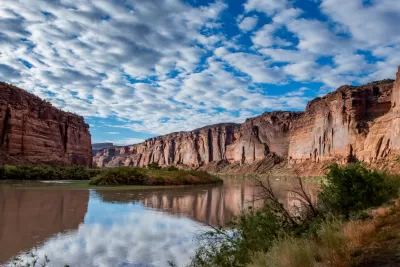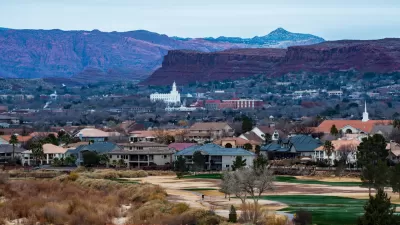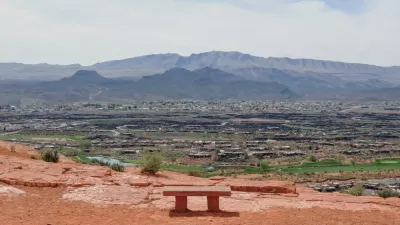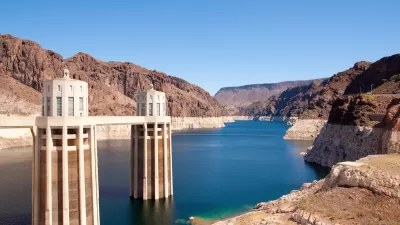After a year of contentious negotiations, Western states dependent on the river’s water supply are nearing a deal that would reduce water use significantly over the next three years.

California, Arizona, and Nevada are close to reaching a deal to protect the Colorado River’s threatened water supply. According to an article by Joshua Partlow in The Washington Post, the Lower Basin states have so far been reluctant to submit feedback on the federal government’s proposed alternatives, claiming they can come to an agreement of their own.
As Partlow explains, “The consensus emerging among these states and the Biden administration aims to conserve about 13 percent of their allocation of river water over the next three years and protect the nation’s largest reservoirs, which provide drinking water and hydropower for tens of millions of people.”
The proposed deal would cut back roughly 3 million acre-feet of water in the next three years in exchange for federal funding from the Inflation Reduction Act. Despite contentious negotiations between California and Arizona, the river’s top users, over the past year, “these states now appear more united than ever and are closing their differences with the federal government, even as significant issues remain unresolved.”
After a historically wet winter, the river’s reservoirs are in less dire condition than they were last year, but officials from Upper Basin states (Colorado, New Mexico, Utah and Wyoming) want to see more binding commitments to conservation from Lower Basin states. Becky Mitchell, Colorado’s representative in the negotiations, insists that the states need to reevaluate their relationship with the river, saying that “the enemy is not any organization, agency or part of the basin.” Rather, “The enemy is the old way.”
More background on the Colorado River crisis:
FULL STORY: States near historic deal to protect Colorado River

Study: Maui’s Plan to Convert Vacation Rentals to Long-Term Housing Could Cause Nearly $1 Billion Economic Loss
The plan would reduce visitor accommodation by 25,% resulting in 1,900 jobs lost.

North Texas Transit Leaders Tout Benefits of TOD for Growing Region
At a summit focused on transit-oriented development, policymakers discussed how North Texas’ expanded light rail system can serve as a tool for economic growth.

Using Old Oil and Gas Wells for Green Energy Storage
Penn State researchers have found that repurposing abandoned oil and gas wells for geothermal-assisted compressed-air energy storage can boost efficiency, reduce environmental risks, and support clean energy and job transitions.

Private Donations Propel Early Restoration of Palisades Playground
Los Angeles has secured over $1.3 million in private funding to restore the Pacific Palisades playground months ahead of schedule, creating a modern, accessible space that supports community healing after recent wildfires.

From Blight to Benefit: Early Results From California’s Equitable Cleanup Program
The Equitable Community Revitalization Grant (ECRG) program is reshaping brownfield redevelopment by prioritizing projects in low-income and environmental justice communities, emphasizing equity, transparency, and community benefits.

Planting Relief: Tackling Las Vegas Heat One Tree at a Time
Nevada Plants, a Las Vegas-based nonprofit, is combating the city’s extreme urban heat by giving away trees to residents in underserved neighborhoods, promoting shade, sustainability, and community health.
Urban Design for Planners 1: Software Tools
This six-course series explores essential urban design concepts using open source software and equips planners with the tools they need to participate fully in the urban design process.
Planning for Universal Design
Learn the tools for implementing Universal Design in planning regulations.
Ascent Environmental
Borough of Carlisle
Institute for Housing and Urban Development Studies (IHS)
City of Grandview
Harvard GSD Executive Education
Toledo-Lucas County Plan Commissions
Salt Lake City
NYU Wagner Graduate School of Public Service





























